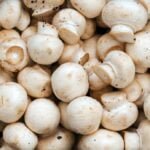Swordbelt Mushroom Spores
Swordbelt Mushroom Spores are a key ingredient within the progress of many succulents. They present important vitamins resembling calcium, magnesium, iron, and zinc to the rising plant. In addition, they act as a pure immune system to assist forestall illness. These spores can be found in varied varieties and sizes.
Agrocybe aegerita
Agrocybe aegerita is a white-rot fungus that seems in a wide range of environments. In temperate forests, it’s a pathogen that degrades useless wooden. Besides its capacity to degrade lignin, additionally it is able to decomposing litter. The fungus has been cultivated in Europe for the reason that Roman period. Currently, the fungus grows commercially for culinary use.
Aegerita is a well-suited mannequin organism for the examine of mushroom developmental biology. It is thought for its archetypal morphology and enzyme gear. As a outcome, it’s a good mannequin for learning how fruiting genes and transcription components act at totally different phases of the fruiting course of.
Recently, we described a brand new class of unspecific peroxygenases in Aegerita. These enzymes are members of the heme-thiolate peroxidase superfamily. They catalyze one-electron oxidations. We investigated their exercise in solid-state lignocellulose cultures.
Furthermore, we’ve recognized 18 UPO genes in Aegerita. These UPO genes belong to the lengthy and quick UPOs. This is the primary report of an unspecific peroxygenase in an agaric fungus.
In addition, we’ve recognized three genes encoding dye-decolourising peroxidase. The genes, Fst3, C2H2 and Hom1, are concerned in transcription. These genes are regarded as essential for the initiation of fruiting. However, it’s not identified whether or not these capabilities are stage-specific or not.
One gene, AaPri3, has undergone paralogisation. The gene is regarded as associated to prion proteins. Another protein, AaPri4, has been discovered to be related to the aaprion-like protein.
Although the whole genomic construction of Aegerita has not but been elucidated, we’ve found a number of potential fruiting genes. Among these are ten putative homologs of the identified fruiting genes. Among them, two are HMG-box transcription components.
Other identified fruiting genes embody Fst4, C2H2, Pcc1 and Hom2. We have additionally uncovered different genes, together with the aaprion-like protein, AaPri4. Moreover, we’ve in contrast the aegerita genome to the genomes of different basidiomycete species.
Overall, we discovered that the genes encoded by the aegerita genome symbolize a novel sort of regulated expression. In the long run, we’ll proceed our analysis on this fungus to higher perceive its operate.
Yanagi Matsutake
Yanagi Matsutake’s Swordbelt Spores, or Swordbelt Matsutake, is a fungus which is intently associated to Tricholoma magnivelare. This matsutake mushroom is thought for its medicinal and culinary advantages.
The matsutake mushroom is a small to medium-sized fruiting physique. It’s a member of the Strophariaceae household. A examine has proven that matsutake spores are the most valuable wild edible mushrooms on the earth.
This fungus is taken into account a delicacy in Japan and is usually cooked in soups and rice. It has been reported to have anti-fungal properties, and has been utilized in conventional Chinese drugs. These mushrooms are additionally offered in specialty grocers.
To decide whether or not or not the matsutake spore is one of the best of one of the best, researchers got down to measure the next: spore amount, spore dimension, and spore form. In doing so, they enumerated the spores from three fruiting our bodies of T. matsutake.
For spore amount, a complete of 4.55 billion spores had been counted. Among these spores, the biggest spore weighed in at 150 mg. Interestingly, the biggest spore was not produced by a fruiting physique of T. matsutake. However, the spore did handle to germinate efficiently in a root system of Japanese crimson pine.
Although it is inconceivable to supply matsutake spores within the discipline, researchers imagine that the method might be used to supply matsutakes artificially. They hope to someday develop a expertise which might enable the cultivation of this exotic mushroom within the forest.
As with any new invention, there are some drawbacks. For instance, spore dispersion is a operate of various components, together with air circulate, weather conditions, and the scale of spores. But, it isn’t simple to know the place these spores will land in a forest. Furthermore, in some instances, the spores are tough to establish in situ, making it inconceivable to find out whether or not or not they’re one of the best of one of the best.
Another nifty tidbit is that matsutake spores have the potential to sluggish tumor progress. This could also be helpful within the battle towards most cancers. Having mentioned that, the matsutake spore is tough to domesticate, and costs vary from 15 to 70 {dollars} for a single mushroom.
Stropharia aurantiaca
Stropharia aurantiaca is a fungi that is typically confused with its shut cousin, Leratiomyces ceres. These two mushrooms are totally different in nearly each respect, however they share among the similar traits. One of probably the most recognizable issues about these mushrooms is the bright red to orange cap. They develop on conifers and oaks, and typically on useless bushes. The gills are additionally very outstanding.
There is loads to love about this fungi, together with its butterscotch perfume, however probably the most intriguing half is the truth that it is a saprobic mushroom, which suggests it is extra prone to dwell within the woods. This permits it to draw an entire host of forestland insect species.
While the stem is pretty thick, it is not significantly massive. It’s often round 2 – 6.5 cm in diameter, and the cap is broadly convex when contemporary. When mature, the stem turns into whitish to yellow. The basal mycelium is white.
In addition to the ring-shaped ring zone, the gills have a notch connected to them. The gills themselves are whitish to pale yellow when younger, and turn into extra purplish grey with age. However, the gills may be fairly quick in dimension.
Other notable options embody the “actually huge” spores, that are produced by the primordium and are microscopic. Spores are typically found on the ground beneath the mushroom, or on wooden beneath the mushroom.
The stipules (small spores) are organized in a single, thick layer, and are often a darkish inexperienced or yellow coloration. Like the primordium, the stipules are wholesome, however are usually not crucial a part of the spore-dispersing course of.
As a bonus, the sporophyte additionally has the best-smelling spores of any identified fungi. Among different issues, the spores may be reworked utilizing chain-saw oil and a logger’s toolkit. Some different issues to notice concerning the sporophyte are that it could dwell on useless bushes, and it has a excessive boiling level. For extra data, try the Wikipedia article on stropharia.
To sum all of it up, one of the simplest ways to establish the Stropharia aurantiaca is to take a look at the numerous varieties. If you are fortunate, you will even get a glimpse of the mighty tiger, which grows within the wild and is among the largest tiger-shaped fungi on earth.
White-rot
The white rot fungus, Agrocybe aegerita, is a pathogenic fungus that’s related to the decline of willows, poplars, and different deciduous bushes. It is characterised by its archetypal mushroom morphology and has a lignocellulolytic capacity.
White rot is a harmful fungus that’s identified to degrade cellulose, hemicellulose, polycyclic aromatics, and chlorinated fragrant hydrocarbons. It is answerable for in depth decay of roots and trunks. In some woody species, white rot also can trigger coronary heart rot.
White-rot fungi have a specialised catabolic mechanism, which breaks down lignin into smaller rings. This course of ends in the formation of a lignocellulose advanced. Lignin is a macromolecule that kinds the wall of plant cells. When lignin combines with cellulose, it kinds a steady advanced. As a outcome, it doesn’t present meals for micro organism that dwell in wooden. Instead, a white-rot fungus makes use of it as a constructing materials.
The fruiting our bodies of this fungus are sometimes velvety and leathery. They develop in concentric or globe-shaped stroma on useless wooden. After a number of weeks, they die. A spore oozes from the stroma and spreads to different components of the tree. Occasionally, they may colonize your entire trunk.
White-rot fungi use a collection of enzymes to interrupt down lignin. These enzymes could make the most of aryl alcohols and aryl amides as a carbon supply. Additionally, a white-rot fungus may use bacteriostatic weapons to cut back wood-inhabiting micro organism. However, the mechanisms that enable white-rot fungi to occupy this function are largely unknown.
Another potential use of white-rot fungi is the elimination of natural pollution from the atmosphere. For this purpose, scientists have performed experiments with white-rot fungi. To examine this, they used artificial fragrant compounds because the carbon supply of their fungal cultures. Using this methodology, they had been capable of match the lignin of poplar bushes. By learning the genes that encode these enzymes, researchers had been capable of observe the compounds current within the fungal cells.
Although this examine was capable of establish the mechanisms by which white-rot fungi metabolize lignin, the fungi are nonetheless uncharacterized. Because of this, the fungi are nonetheless a supply of vitamin for many individuals around the globe.




